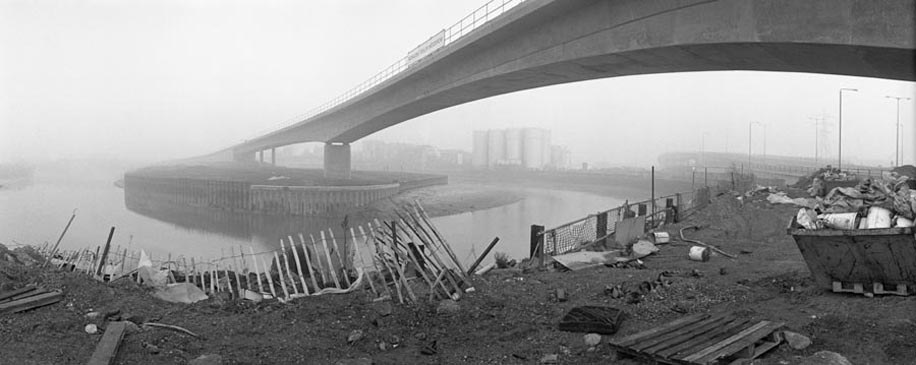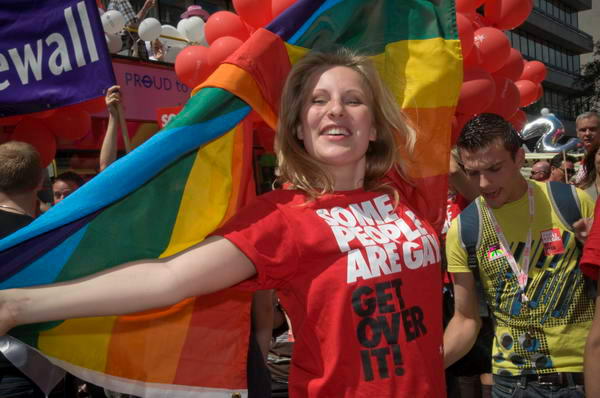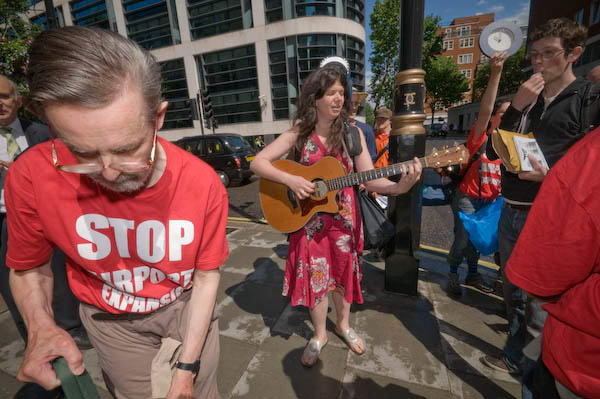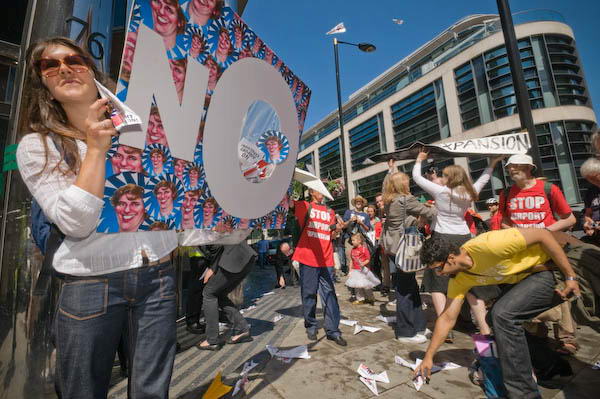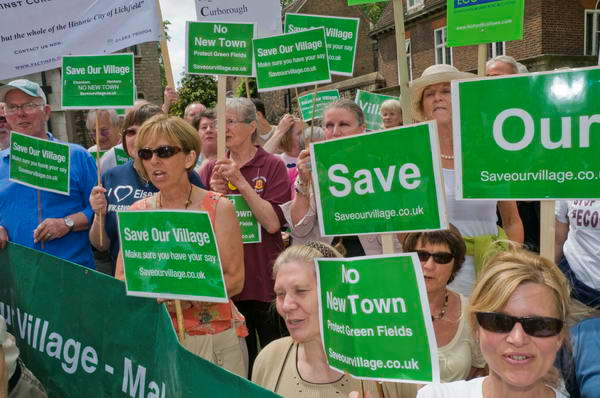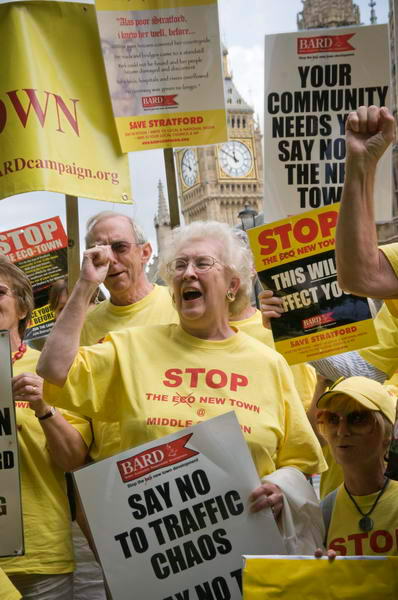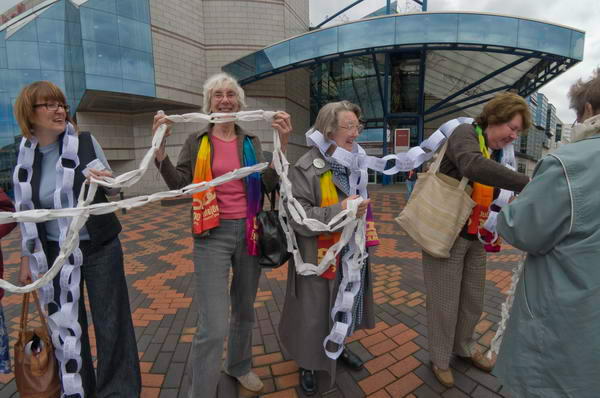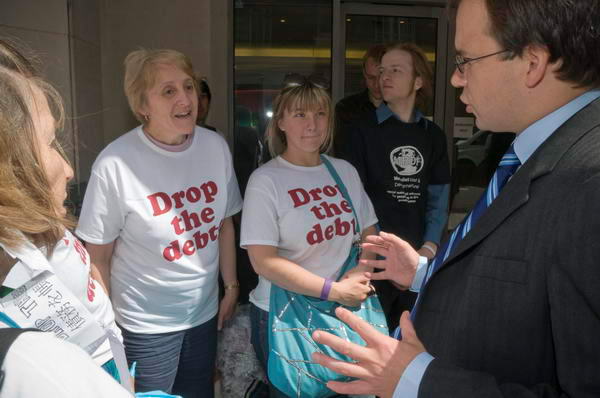‘Are You being Served’ is not, as its name suggests, about a department store, but about the small shops that are common in the inner city area around the Museum of Childhood in Bethnal Green and Hackney in the East End of London. (If you look on Tom Hunter‘s web site, you will find this work under the more prosaic and I think rather better title, ‘East End Business.’)
I first met Hunter when his work ‘The Ghetto‘, a photographic sculpture of a street in London Fields, just up the road from the Bethnal Green museum, was one of the star exhibits in a show at the Museum of London in 1995, in which I also had a couple of pictures, and I’ve written about his work on several occasions, most recently when he became the first photographer to have an exhibition in London’s National Gallery.
When I visited the show (it continues at the Museum of Childhood until Nov 9, 2008), there were 16 moderately large colour prints on the wall of the Museum, tucked away to the left as you enter. Although the museum was busy with school groups coming in an out during the 20 minutes or so while I was there, I was the only person to come and look at them at that time. Curiously, an Evening Standard review had talked of their being 30 prints, so there appear to be 14 that have gone missing (or a curious lack of numeracy by that reviewer) or perhaps hidden elsewhere in the museum. On the web there are roughly 40 images, including most if not all of those I saw in the show.
What I think the show needs for its current location- and the pictures would serve well – is a well-written worksheet getting visitors to the museum – who mainly are school-children – to look at the images and question the content and their responses to it. What it gets is an essay of typical academic mystification. But it isn’t fair to blame Tom Hunter for the text which accompanies his pictures.
The pictures seem to me to be a workmanlike response to a relatively simple brief. The essay says they “were inspired by a nineteenth-century model of a local a butcher’s shop in the Museum of Childhood” (sic) What it fails to note is that pictures such as this were a staple of Victorian photography, and a genre that has continued to attract photographers to the present day. Its the kind of thing that many students have a go at in their courses (one of many project ideas that we used to suggest to students on the courses I taught on) and that has filled rather too many books of photographs and exhibitions – including at least one other in a major London gallery in the past year.
Many of us have been drawn to photograph such small businesses, largely because of the way they reflect the personalities and culture of their owners. You can see a few of my own attempts in this area among the pictures in my own ‘Cafe Ideal, Cool Blondes, and Paradise‘, (1986-96) in which I deliberately avoided photographing the shop owners, who are at the centre (often literally) of Hunter’s pictures.
It goes without saying that Hunter does it pretty well, although perhaps this isn’t the work he will particularly want to be remembered by. It is certainly all good, workmanlike stuff, but nothing that has the appeal of – for example, Walker Evans’s 1936 Roadside Stand near Birmingham.

(You can download a high res version of this from the US Library of Congress to print.)
Compositionally, Hunter I think largely follows the lead of Evans, liking when possible to adopt a square-on viewpoint. This may have limited his choice of subject matter, as many of the local shops will have been just too small or have been laid out in the wrong way to allow him to work in this manner.
The pictures do – of course – as the essay I think takes rather a lot of words to say, reflect the multicultural nature of the area. It would have been hard for them not to. But while it suggest that there “is always a sense of the anticipated customer” I think this is clearly not the case. They are very clearly about being photographed and it is the interaction between photographer and photographed that enlivens these images.
It is a relationship that tends to be unsure, and Hunter does seem to very much put his subjects at ease. They may be thinking he is a slightly crazy (as people often do think photographers are – though the police posters try to convince them we are all dangerous terrorists), but they perhaps think he is a harmless and rather pleasant lunatic and are happy to humour him.
There are some curious excitements in these images that certainly made my visit worthwhile. One is I think a rather small shop, forcing Hunter for once to work from an oblique viewpoint, actually looking in through the doorway. Most of the image is taken up by a glass-fronted display case of pastries (rather like a museum show case), and the shopkeeper and his shorter female assistant are in a small area above some kind of electrical unit at the right of the image. There is something about the image – perhaps their sharpness while this unit, a little closer to the camera is slightly out of focus, that makes them look not like actual people but like some kind of cardboard figures in an advertising display (traditionally large format camera movements might have been used to produce an oblique plane of focus for an image like this.) The oddity is enhanced by the side of the display unit, which has a patterned effect and, at first glance a metallic look to it. My mind interprets the side as a surface that should reflect rather than transmit, and we can see the left side of the man’s shirt and shoulder through it, but visually the strong check pattern seems to be in front. It is a curious and rather compelling effect.
Another image shows a huge patterned suitcase like some leopard in its den between two African men surrounded by suitcases and cardboard boxes; they are relaxed, leaning back, but there is a menace as that leopard may at any minute pounce. But perhaps my favourite image is a Chinese fish and chip shop, again seen through a doorway to get the necessary distance, the L plate on a box on the back of a scooter tilted crazily at the right of the image; but what really makes it for me is the contrast with the elegance of the peacock screen poking up behind the counter.
This was also a show that made me think about technical questions, particularly about the differences there might have been in this work had Hunter used digital instead of film. Looking at it on his web site also made me think about the differences between viewing a set of images on screen and on the gallery wall. But these are questions I had better return to in later post.
